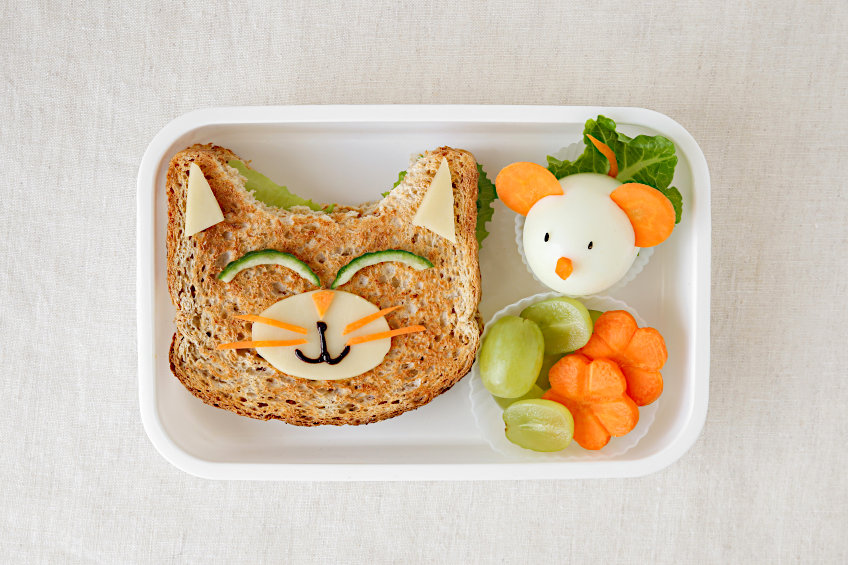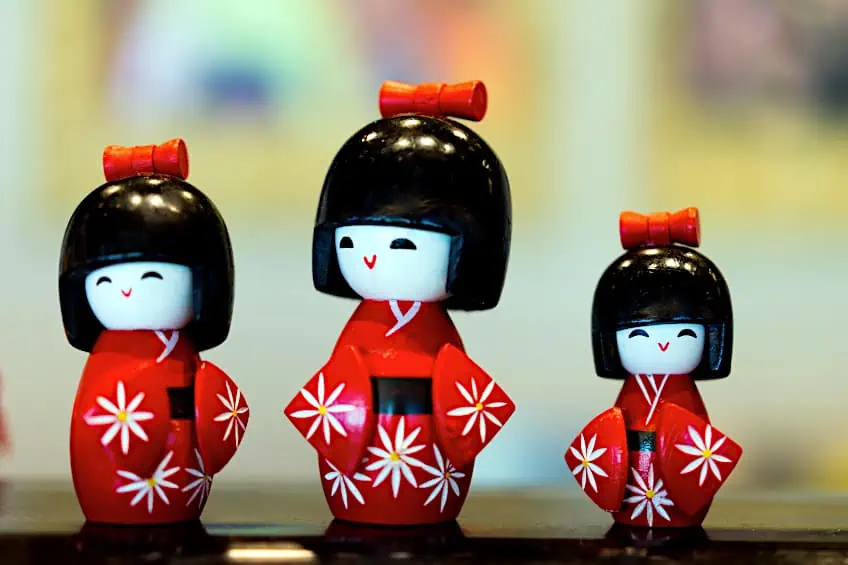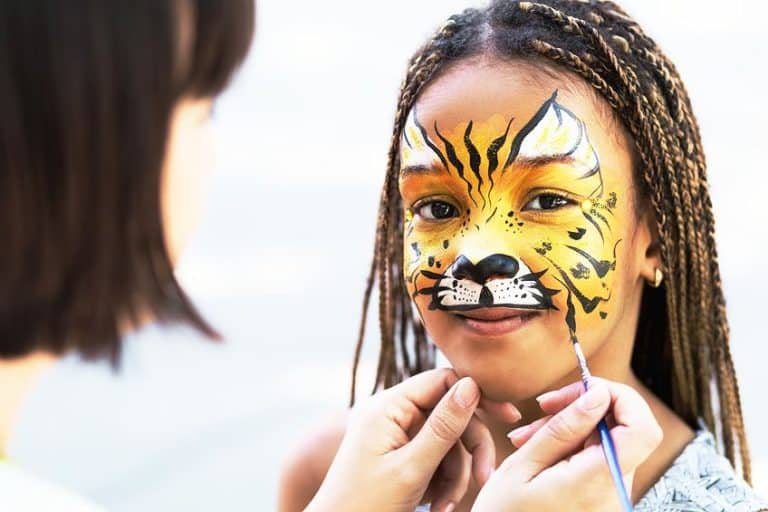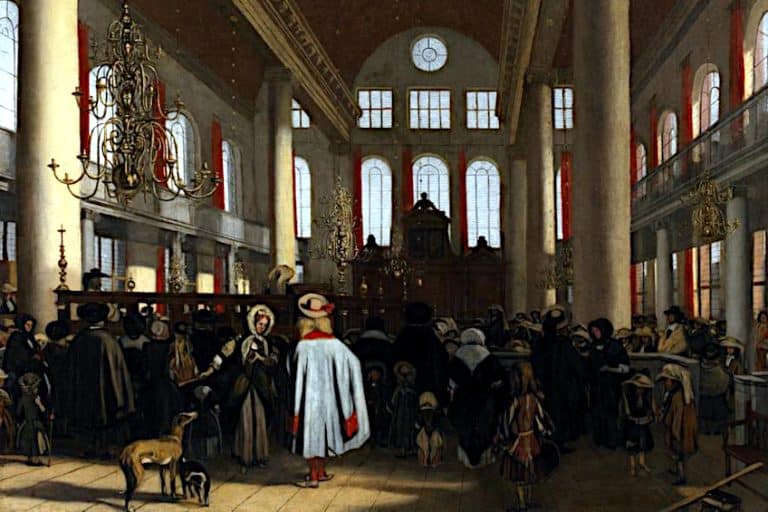What Is Kawaii? – The Multiple Facets of Japanese Cute Culture
This post may contain affiliate links. We may earn a small commission from purchases made through them, at no additional cost to you.
Kawaii is used around the world to describe many cute objects and characters, but what is kawaii exactly? Kawaii first originated in Japan and over the last five decades, has evolved from a simple word into a global cultural phenomenon. Below, we explore how Japan’s “cute culture” emerged, how it has changed over time, and the impact it has had on society, pop culture, and media both within Japan and worldwide.
Table of Contents
What Is Kawaii?
Kawaii is what is known as Japan’s cute culture. It can be used to describe people or objects that have an innocent, charming, shy, or childlike quality. It has been used to refer to a number of things including anime and cartoon characters, fashion, and even handwriting.
Today, kawaii is more than just an adjective and has also grown into an entire Japanese aesthetic encompassing popular culture, clothing, toys, food, entertainment, and even mannerisms.
What Does Kawaii Mean?
While you may know what kawaii means today, it did not always have this definition. The term “kawaii” has had other meanings throughout history, however, the mid-90s marked the beginning of the modern use of the word. Kawaii is originally derived from the Japanese phrase “kao hayushi,” which translates to “(one’s) face (is) aglow” and commonly refers to an attractive blushing or flushing of the face when one is embarrassed or feeling self-conscious.
 Demure and shy expressions are central to Kawaii style; Stock image
Demure and shy expressions are central to Kawaii style; Stock image
Over time the pronunciation of the word evolved into kawayui and then into the modern kawaii, while its meaning evolved slowly into today’s common kawaii meaning of “shine” or “cute”. Although the term is commonly written in hiragana, you can also use the ateji in which the kanji directly translates to “acceptable for affection” or “able to love/be loved”.
Kawaii is also used in other contexts to mean sweet, endearing, precious, or little and can be used in reference to young children, animals, or even your grandparents.
History of Kawaii
There is no one clear origin of kawaii, rather there are many different factors that culminated to produce the modern cultural phenomenon. As far back as the Heian Period (794 – 1185), characteristics of kawaii can be seen in many examples of Japanese art.
Combining animals or inanimate objects with human features, such as human faces, was a popular technique at the time and was used to make viewers feel more connected to the subjects in the prints.
Today, we see these aspects a lot in anime and other forms of media but especially in kawaii. In the 1900s, saw the largest development and spread of kawaii culture and is said to have been started by Yumeji Takehisa, a well-known Japanese artist. Takehisa opened a stationary shop targeted at young girls, which pioneered the kawaii aesthetic. Later after World War II, the occupation of Japan by allied forces resulted in a mixing of Western and Japanese culture, which further influenced the evolution of kawaii.
 Early Spring by Yumeji Takehisa (1926); Yumeji Takehisa, Public domain, via Wikimedia Commons
Early Spring by Yumeji Takehisa (1926); Yumeji Takehisa, Public domain, via Wikimedia Commons
Around 1970, teenage girls in Japan started developing a unique form of handwriting. This writing was highly stylized, using rounded lettering, cartoon faces, and small stars and hearts to give it a cute, child-like feeling. It focused largely on aesthetics and was very difficult to read, which resulted in it being banned in most schools at the time.
This form of text became very popular amongst advertisers over the next decade and eventually led to the development of the most influential kawaii character, Hello Kitty.
This boom continued throughout the 90s and 2000s, and a whole host of cute characters, fashion, food, and even pop idols were created. One of the most unique aspects of the kawaii movement is that it became popular with more than just young girls and expanded to include men, women, and children of all ages. The early 2000s also saw the expansion of kawaii into other countries, although they tended to have a much simpler expression of kawaii meaning and aesthetic.
Types of Kawaii
While you may think that only pastels and frills are considered kawaii, however, today there are different types of kawaii aside from the traditional aesthetic.
Shibu-kawaii, or “simply cute” kawaii, is a style that is cute but without being too extravagant. It is the most simple and casual of all the types and can be worn every day.
Yume-kawaii, or “dreamy” kawaii, is a style that is full of whimsy. It uses a lot of pastel colors, cute magical creatures such as unicorns, and light fluffy or floaty materials to create a dreamy, fairy-tale aesthetic.
 The extremely popular unicorn cake trend ascribed to Canadian baker Jenna Hutchinson reflects core aspects of the Yume-Kawaii style; Stock image
The extremely popular unicorn cake trend ascribed to Canadian baker Jenna Hutchinson reflects core aspects of the Yume-Kawaii style; Stock image
Ero-kawaii, or “sexy-cute” kawaii, is a more adult style of kawaii. This variation is more erotic and sexier compared to other forms of kawaii, however, importantly it still retains the cuteness characteristics.
Busu-kawaii, or “ugly-cute” kawaii, is a fun style of kawaii that describes something that is both ugly and cute. This style usually achieves this effect by appealing to our sense of pity for small, unconventional things like warty frogs or gremlins.
Kimo-kawaii, or creepy-cute kawaii, is another seemingly unconventional kawaii style. This style is all about being a little unnerving but strangely cute at the same time. Cartoon spiders, antique children’s dolls, as well as other horror elements, are commonly used in this type of kawaii, however, they all have cute characteristics.
Key Characteristics of the Kawaii Art Style
There are many characteristics that are needed for something to be considered “kawaii” and these can apply to many different things including fashion, food, and merchandise, to name a few.
Despite the different types of kawaii, they all share a few identifiable elements. The kawaii art style is distinguished by characters who are created to be cute and loveable, which artists achieve by giving them disproportionately large heads, small bodies, big eyes, and simple facial expressions.
The eyes themselves typically do not contain any pupils but are rather made using simple black dots or circles. The facial features, such as the eyes, nose, and mouth, of these characters are usually aligned close to the horizontal center of the face. This alignment, along with a soft roundness, is typically seen in young animals and babies and therefore results in these kawaii characters being associated with cute and adorable things.
 Anime illustration of a girl holding a cat displaying facial characteristics typical of Kawaii; bogdan, CC0, via Wikimedia Commons
Anime illustration of a girl holding a cat displaying facial characteristics typical of Kawaii; bogdan, CC0, via Wikimedia Commons
These simple expressions and lack of emotion are a large part of what makes many people love kawaii as they allow their emotions to be projected onto the character. Kawaii characters are also very simple. They often have very little details, are commonly outlined in thick, black lines, and make use of a softer color palette primarily consisting of pastels. These soft colors are also used in kawaii fashion and add another layer of innocence to the look and feel of kawaii characters.
 Anthropomorphic sushi-related kawaii characters; Stock image
Anthropomorphic sushi-related kawaii characters; Stock image
Kawaii in Japanese Society
Kawaii has become a cultural phenomenon in Japanese society since its unprecedented growth in the 1900s. Today, kawaii culture and characters can easily be seen in many places throughout the country, particularly in Tokyo.
There are a variety of different areas and activities that cater to every aspect of kawaii culture from those who enjoy kawaii cartooning, games, and music to themed kawaii cafes and photo spots to meet up with friends and show off your kawaii fashion.
Kawaii in Japanese Advertising and Media
Aside from the impact of kawaii on pop culture, kawaii has also become a big influence on advertising and media in Japan. Kawaii characters and writing is used on project packaging, signage, and advertisements both online and in stores. The most prominent impact of kawaii on advertisement, however, is Japan’s widespread use of cute mascots.
 Photograph of two young vistors with Gota-Kun, the mascot of the Goryokako Tower in Hokkaido taken 2018; MIKI Yoshihito from Sapporo City,Hokkaido., JAPAN, CC BY 2.0, via Wikimedia Commons
Photograph of two young vistors with Gota-Kun, the mascot of the Goryokako Tower in Hokkaido taken 2018; MIKI Yoshihito from Sapporo City,Hokkaido., JAPAN, CC BY 2.0, via Wikimedia Commons
These mascots are very popular and typically have kawaii character designs with cute features and large heads and eyes. Mascots are used to represent almost everything including cities, businesses, companies, events, and schools. In fact, they form a key part of Japan’s tourism strategy to attract international tourists to many regions of the country.
Kawaii in Everyday Life
Kawaii culture is not only for businesses but also for the individual. Japan’s cute culture is used by many as a form of expression through clothing or interior design, while others may use it to bring some positivity and playfulness to their day-to-day lives.
Kawaii Aesthetics
Through the growth of kawaii culture, cuteness has become a largely acceptable phenomenon within Japanese society for both men and women. Women often dress and act cute and innocent to attract potential suitors, and men shave their legs and facial hair to give them a younger appearance. There are a few broad fashion styles that are aimed at making the wearer look more adorable and innocent, however, the most popular are the Lolita and Decora fashion styles.
 Young woman in Victorian-inspired Kawaii fashion; Stock image
Young woman in Victorian-inspired Kawaii fashion; Stock image
Kawaii fashion serves in many ways as a form of escapism both within Japan and globally. Japan is known for its workaholic culture, so many use the contradictory cuteness of kawaii fashion to express individuality and creativity. It reminds many of the carefree innocence of their youth and gives them an escape from the stresses of modern-day life.
Lolita fashion is centered on creating a porcelain-doll aesthetic, with a mix of Victorian and gothic elements in pastels or other light hues.
There are many different subsets of Lolita fashion depending on the look you prefer and how stylized you want your clothes to be. Decora fashion is centered on self-decoration and involves many layers of accessories and decorations, which gives wearers a more child-like appearance.
Kawaii Bento Boxes
Aside from fashion, kawaii has also had a large influence on food presentation in Japan. Bento boxes are a popular way to integrate kawaii culture into your everyday life and involve transforming simple packed lunches into cute art works. Rice, meat, vegetables, and fish have all been shaped, cut, and cooked into adorable shapes resembling cute faces, animals, or scenes as a form of fun and creative expression. The trend has become increasingly popular with the advent of social media and has developed into two distinct styles namely, oekakiben or “picture bento”, and kyaraben or “character bento”.
 Cat and mouse-themed bento box; Stock image
Cat and mouse-themed bento box; Stock image
Kawaii and Pop Culture
Kawaii culture has influenced many other parts of pop culture including anime, manga, video games, and even music. There are almost countless examples of kawaii characters in anime and manga series. These characters have the signature traits of kawaii and can be found in all varieties from Shonen to Josei.
One of the most well-known kawaii characters is Pikachu from the Pokémon series.
Kawaii’s influence is also seen in various video games with many games using cute sprites and characters with large heads and round eyes, such as Kirby from the video game series of the same name. Hollow Knight is an example of kimo-kawaii with its combination of cute characters, creepy setting, and muted color palette.
 Cosplay participants dressed as characters from Hollow Knight; Syrio, CC BY-SA 4.0, via Wikimedia Commons
Cosplay participants dressed as characters from Hollow Knight; Syrio, CC BY-SA 4.0, via Wikimedia Commons
Kawaii can also be seen in music, which is characterized by a sweet falsetto and electronic tones similar to retro games. The music is often upbeat and includes various bells, twinkles, and percussion instruments to give it an almost juvenile quality.
Hello Kitty
Hello Kitty is arguably the most well-known kawaii character. Created in 1974 by Yuko Yamaguchi, Hello Kitty displays many of the key kawaii characteristics such as the soft color palette, the black outlines, round oversized head, small body, as well as the simple facial features. Hello Kitty became an instant success and has continued to grow over the years, even becoming Japan’s official tourism ambassador in 2008.
 EVA Airways Airbus A330-302X with Hello Kitty and Magic Stars livery; byeangel from Tsingtao, China, CC BY-SA 2.0, via Wikimedia Commons
EVA Airways Airbus A330-302X with Hello Kitty and Magic Stars livery; byeangel from Tsingtao, China, CC BY-SA 2.0, via Wikimedia Commons
Kawaii Around the World
Since the late 1900s, kawaii culture has spread throughout the world through pop culture and fashion. Kawaii in other regions does not have the same nuanced meaning as it does in Japan, but rather tends to focus on the cute, pastel-pink aesthetic.
Many people outside Japan can therefore view kawaii culture negatively and see it as childish or immature, especially for older adults.
Cosplay
Cosplay is another way that many express kawaii culture around the world. Cosplay, short for costume play, involves people dressing up as your favorite characters, including cute kawaii characters. While many try to emulate the character as closely as possible, some cosplayers add their own special kawaii twist.
 Kawaii Hello Kitty cosplayers; Dick Thomas Johnson from Tokyo, Japan, CC BY 2.0, via Wikimedia Commons
Kawaii Hello Kitty cosplayers; Dick Thomas Johnson from Tokyo, Japan, CC BY 2.0, via Wikimedia Commons
Because cosplay involves dressing up, it is usually a more socially acceptable way to participate in kawaii culture in many regions, making it very popular at fan events and conventions. Cosplay has therefore become an important form of self-expression for many both inside and outside of kawaii culture.
Criticisms of Kawaii Culture
As kawaii culture has developed and spread, many criticisms of the practice have emerged. One of the most prominent is that Japanese women are socialized from a young age to be kawaii. This means that even as they mature, women must keep their girlishness and innocence instead of being perceived as a woman. This has resulted in many pointing out the inherent sexism of kawaii culture, as for a woman to be attractive they should appear submissive and demure both mentally and physically.
 Young woman in the type of eroticized style that has earned Kawaii criticism; Stock image
Young woman in the type of eroticized style that has earned Kawaii criticism; Stock image
The current expectation for women to act cute and innocent has evolved into a characteristic that is prized in both the dating and working world. Although some women feel that kawaii culture is empowering, this is detrimental to those who do not wish to partake, as they are not as successful in their personal or professional life.
This is especially problematic in Japan as it is considered to be one of the worst-rated countries to be a working woman.
Less commonly is the criticism that kawaii has been used to frame fragility, sickness, or physical handicap as cute and adorable. This is highly problematic as it undermines the struggles that many of these individuals experience and reduces them down to their condition instead of viewing them as a person.
From cute and loveable characters to fun and frilly fashion, kawaii culture has grown from its original conception into a global cultural phenomenon. Although it has not gone without its criticisms, there is no denying that kawaii has had a major impact on Japanese society and the world as a whole. Through pop culture, food, and fashion, kawaii culture continues to expand into new regions, and provides many with a way to express their creativity and personality.
Frequently Asked Questions
What Is Kawaii?
Kawaii commonly refers to the cute culture of Japan, and can be used as an adjective to describe things that have a cute, innocent, or childlike quality. The term can be used to refer to objects, characters, fashion, food, or even people that have these traits.
What Does Kawaii Mean?
The term kawaii evolved from the phrase kao hayushi, meaning (one’s) face (is) aglow. The pronunciation of this word then slowly changed into kawayui before becoming the modern word kawaii. The meaning of the word also morphed slowly into the modern kawaii meaning, which is shine or cute.
Megan is a writer and researcher who graduated from the University of Cape Town with a degree in Social Sciences, specializing in Psychology and Environmental Science. Her passion for knowledge and leaving a positive impact has fueled her current work in conscious and sustainable growth in Southern Africa. Megan’s love of nature has also led her to train as an animal behaviorist. She works part-time training and rehabilitating dogs. Megan is interested in the physical and psychological effects of colors in our environment on our mood and well-being. In addition, she is concerned with how art and creativity have been an integral part of human society. Megan van Schoor has been writing blog posts on the topics of painting, drawing, and color theory for acrylgiessen since 2021.
Learn more about Megan van Schoor and about us.







